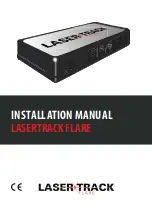
Caring
For Your Vehicle
27
K
• Check all screws and cap nuts, and their protective cov-
erings regularly and tighten as required. Check plastic
parts on a regular basis for cracks or broken pieces.
• Avoid operating the vehicle on sand, loose dirt or gravel.
Sand, loose dirt or gravel in the motors or electrical
switches can cause them to jam, and could cause switch
or motor failure.
• During snowy or rainy weather, the vehicle should be
stored inside or under a protective cover. Remember to
charge the batteries at least once per month while your
vehicle is not in regular use.
• Avoid operating the vehicle in wet or snowy conditions
and do not spray the vehicle with a hose. Do not wash
the vehicle with soap and water. Water or moisture in the
motors or electrical switches can cause them to corrode
and could cause switch or motor failure.
• The vehicle can be wiped down with a soft, dry cloth. For
a shiny finish, you can wipe plastic parts with a non-wax
furniture polish applied to a soft-cloth. Do not use auto-
motive wax. Do not use soap and water or spray the
vehicle with a hose.
• To ensure that your vehicle stays in good operating
order, we recommend that you periodically have your
vehicle checked by a Power Wheels
®
authorized service
center. See page 32 for the list of authorized service
centers or call
1-800-348-0751
for the location of the
authorized service center nearest you.
How to Operate Your Vehicle
IMPORTANT! To avoid damaging the motors and
gears, make sure to stop the vehicle before switching
between low and high speeds.
• Make sure the shifter is in the high speed
position .
• Press down on the foot pedal
. The vehicle will go
forward at a maximum of 5 mph
.
• Help your child practice steering to learn how far and
how quickly to turn the steering wheel when driving
forward in high speed.
• Stopping in high speed is the same as stopping in low
speed. The vehicle automatically stops when your
child’s foot is lifted from the pedal.
11
3
11
2
To Drive - High Speed
11
1
11
2
11
3
Advanced Use - High Speed Drive
• Before you disconnect the high speed lock-out, make
sure your child knows how to steer, how to start and stop
the vehicle, and knows the rules for safe driving. When
the high speed lock-out is disconnected, the vehicle can
be driven forward in low speed (2
1
/
2
mph, maximum) or
high speed (5 mph, maximum).
• Make sure the shifter is in the low speed
position.
• Loosen the screw in the shifter using a Phillips screw-
driver.
• Remove the screw.
• Insert the lock-out screw into the hole in the outside
of the shifter handle to keep it for future use (see above).
It can be re-inserted into the shifter to lock-out
high speed.
Removing
Lock-out Screw
Storing
Lock-out Screw
Shifter
Shifter
11
1










































